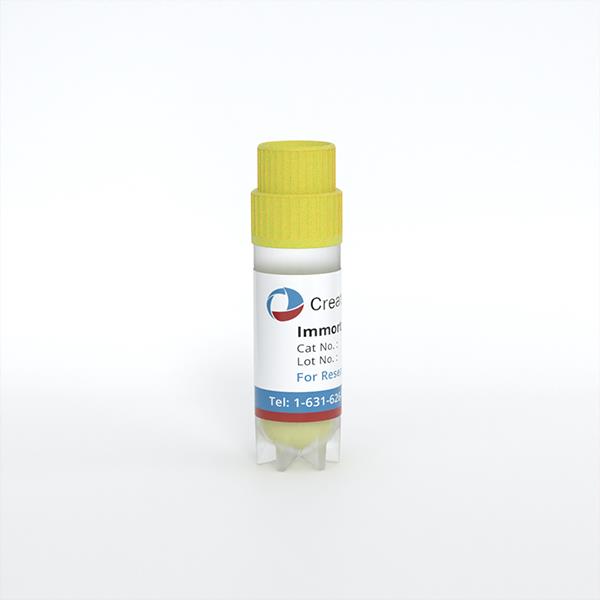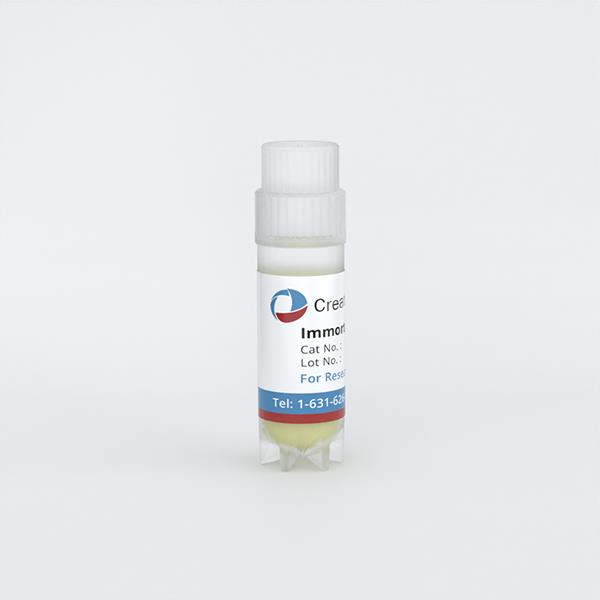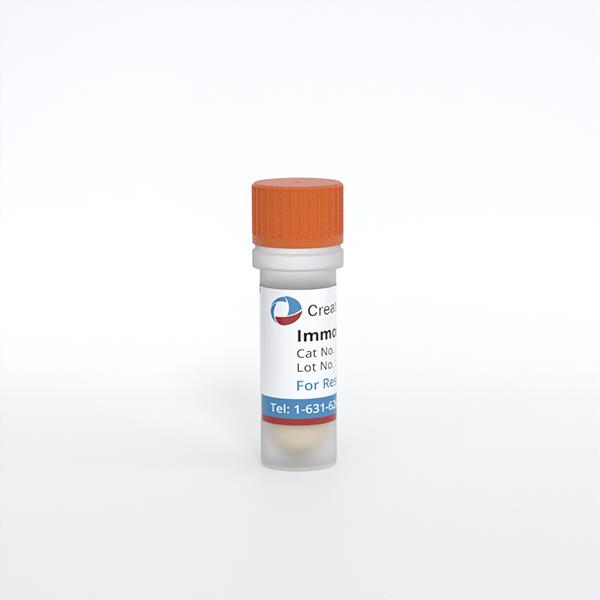
Immortalized Trisomy 16 Mouse Neuronal Cells (MTh)
Cat.No.: CSC-I9356L
Species: Mus musculus
Source: Spinal Cord
Morphology: Neuronal
Culture Properties: Adherent
- Specification
- Q & A
- Customer Review
Cat.No.
CSC-I9356L
Description
The Immortalized Trisomy 16 Mouse Neuronal Cells (MTh) were derived from the spinal cord of a trisomy 16 fetal mouse after 12-16 days of gestation. Trisomy 16 in mice is an animal model for trisomy 21, or Down Syndrome, in humans. Since trisomy 16 animals diein utero, the immortalized Trisomy 16 Mouse Neuronal Cells (MTh) offers an immortalized in vitro model. The fetal mouse was bred from double heterozygous (Rb 2H/RB 32 Lub) males and normal C57BL females. Transformation of the cell line was induced via supplementation with UCHT1 rat thyroid cell line-conditioned medium and was confirmed via the detection of vimentin. RT-PCR found an overexpression of enzyme SOD-1, encoded on mouse chromosome 16 and human chromosome 21, and confirmed the trisomy status of the cell line. Immunohistochemistry found the presence of neurological makers, but the absence of glial markers in the Immortalized Trisomy 16 Mouse Neuronal Cells (MTh). Upon comparison to Immortalized Mouse Neuronal Cells (M4b), the Immortalized Trisomy 16 Mouse Neuronal Cells (MTh) were found to have a greater basal [Ca2+] and a greater sensitivity to neurotransmitters. No significant difference in choline uptake was observed between the two cell lines. The Immortalized Trisomy 16 Mouse Neuronal Cells (MTh) can be used as anin vitromodel to study neuronal biology and physiology related to Down Syndrome.
Species
Mus musculus
Source
Spinal Cord
Culture Properties
Adherent
Morphology
Neuronal
Immortalization Method
Supplementation of plating medium with UCHT1 rat thyroid cell line-conditioned medium
Application
For Research Use Only
Storage
Directly and immediately transfer cells from dry ice to liquid nitrogen upon receiving and keep the cells in liquid nitrogen until cell culture needed for experiments.
Note: Never can cells be kept at -20 °C.
Note: Never can cells be kept at -20 °C.
Shipping
Dry Ice.
Quality Control
1) RT-PCR for SOD-1 and GAPDH;
2) Immunohistochemistry of neuronal markers;
3) Intracellular Ca2+ measurements.
2) Immunohistochemistry of neuronal markers;
3) Intracellular Ca2+ measurements.
BioSafety Level
II
Citation Guidance
If you use this products in your scientific publication, it should be cited in the publication as: Creative Bioarray cat no.
If your paper has been published, please click here
to submit the PubMed ID of your paper to get a coupon.
Ask a Question
Write your own review
Related Products
Featured Products
- Adipose Tissue-Derived Stem Cells
- Human Neurons
- Mouse Probe
- Whole Chromosome Painting Probes
- Hepatic Cells
- Renal Cells
- In Vitro ADME Kits
- Tissue Microarray
- Tissue Blocks
- Tissue Sections
- FFPE Cell Pellet
- Probe
- Centromere Probes
- Telomere Probes
- Satellite Enumeration Probes
- Subtelomere Specific Probes
- Bacterial Probes
- ISH/FISH Probes
- Exosome Isolation Kit
- Human Adult Stem Cells
- Mouse Stem Cells
- iPSCs
- Mouse Embryonic Stem Cells
- iPSC Differentiation Kits
- Mesenchymal Stem Cells
- Immortalized Human Cells
- Immortalized Murine Cells
- Cell Immortalization Kit
- Adipose Cells
- Cardiac Cells
- Dermal Cells
- Epidermal Cells
- Peripheral Blood Mononuclear Cells
- Umbilical Cord Cells
- Monkey Primary Cells
- Mouse Primary Cells
- Breast Tumor Cells
- Colorectal Tumor Cells
- Esophageal Tumor Cells
- Lung Tumor Cells
- Leukemia/Lymphoma/Myeloma Cells
- Ovarian Tumor Cells
- Pancreatic Tumor Cells
- Mouse Tumor Cells
Hot Products

